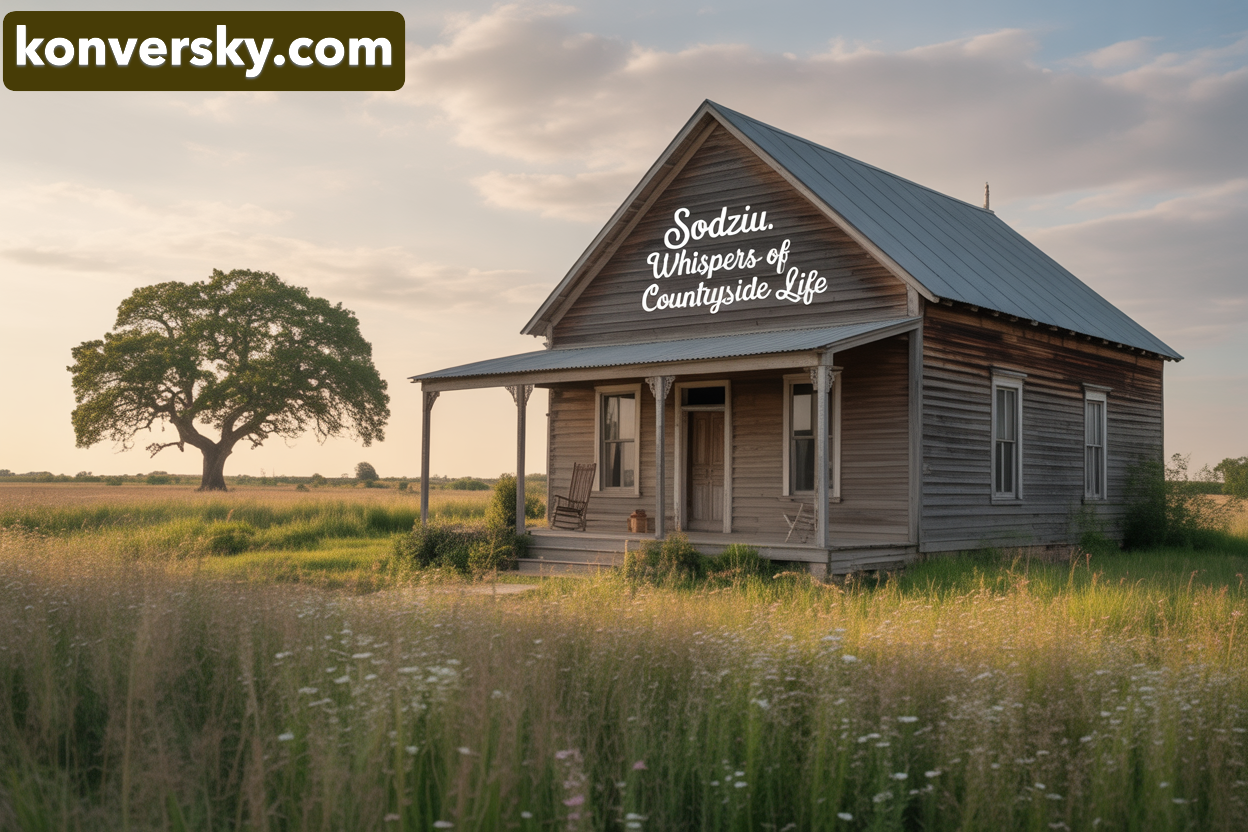Introduction
Sodziu is a quiet emblem of rural life and rich heritage, a word that conjures images of pastoral serenity and timeless traditions. It captures the simple routines and customs cherished by generations, forming a bridge between past and present. Nestled among serene fields, rolling meadows, and gently flowing streams, Sodziu offers a glimpse into village culture that has remained remarkably resilient over centuries.
Its charm lies in representing the “whispers of countryside life,” subtle yet profound. Each wooden home, each festival, and each story carries echoes of history, reminding observers of lives intertwined with the rhythms of nature. In Sodziu, the seasons dictate activity, and the land provides not only sustenance but also a framework for community and culture. In this peaceful setting, nature, daily life, and community traditions blend harmoniously, fostering simplicity and a life of thoughtful rhythm.
Sodziu invites everyone to experience the harmony of tradition, calm landscapes, and cultural richness.Heritage comes alive in every detail, from the smell of freshly baked bread to the melodies of folk songs carried through the air.
The Meaning of Sodziu
Sodziu symbolizes the heart of rural life, embodying strong community bonds and collective identity. It is more than a word; it encapsulates culture, heritage, and the essence of a local identity preserved over centuries. The term evokes images of wooden homes, fertile farmland, and warm family gatherings. It celebrates daily life rooted in nature and the routines that sustain human and agricultural life alike.
Festivals, music, and storytelling are integral to Sodziu, highlighting values such as cooperation, resilience, and mutual respect. Villagers share knowledge, assist one another in times of need, and pass down lessons through generations. Sodziu also teaches intangible principles: patience, the importance of work aligned with natural cycles, and the joy of shared experiences. It is a repository of wisdom that preserves a way of life many still cherish today.
Historical Roots of Sodziu
The origins of Sodziu lie deep within small rural communities, where families lived close to the land and depended on farming and seasonal labor. Over time, the word became synonymous with rural identity and cultural continuity, representing the values and practices that distinguished village life from urban existence.
Generations have safeguarded Sodziu through careful observance of daily practices and oral storytelling. Elders taught children not only practical skills—farming, cooking, and craftwork—but also moral lessons embedded in local legends and songs.
Sodziu thrives in the heart of community life, shining brightest during festivals, harvests, and family celebrations. Seasonal rituals, whether marking planting, harvest, or solstices, strengthened community bonds and mirrored the rhythms of nature. These ceremonies also reinforced social cohesion, creating a sense of shared purpose and identity. Today, many of these traditions continue, echoing the legacy of Sodziu in vibrant, living form.
Sodziu and Rural Architecture
Sodziu villages feature traditional wooden houses with thatched or tiled roofs, seamlessly merging with fields, forests, and meadows, reflecting harmony with nature and practical village life.Courtyards, barns, and gardens complement the homestead, providing spaces for work, family life, and community interaction.
The architecture of Sodziu embodies simplicity, functionality, and harmony with nature. Interior layouts are carefully designed to facilitate family routines and farm work. Shared courtyards encourage interaction between neighbors, fostering cooperation and social ties. Even in architectural details, there is a subtle emphasis on aesthetics rooted in local culture—hand-carved doors, painted window frames, and floral motifs that connect the household to natural beauty.
Sodziu spaces are designed to sustain community life. Festivals, markets, and daily exchanges unfold organically within these layouts, maintaining the vibrancy of rural existence. Architecture is not just shelter; it is a medium through which cultural values and social bonds are expressed and preserved.
Cultural Practices and Traditions
Sodziu communities thrive on their rich cultural practices. Festivals and seasonal gatherings are celebrated with enthusiasm, marking harvests, weddings, and other milestones with rituals that have endured for generations. Villagers come together, blending work and celebration, to honor traditions that reinforce both social and spiritual cohesion.
Folklore, music, and storytelling form the backbone of Sodziu life. Songs pass down wisdom, myths preserve historical memory, and stories instill moral lessons. These practices foster connections between generations, ensuring that children grow up grounded in the values and experiences of their ancestors. Traditional cooking, craftwork, and agricultural routines further reinforce cultural identity, giving daily life a rhythm that is both practical and meaningful.
Connection to Nature
Sodziu reflects a profound harmony with the natural environment. Villagers live in alignment with the seasons, their daily routines synchronized with sunrise, rainfall, and harvest cycles. Agriculture and farming are not merely economic activities but forms of cultural expression and ecological stewardship. Families cultivate crops, raise livestock, and tend gardens with care, embodying sustainable living practices that respect the land.
Traditional methods, such as crop rotation, composting, and hand-crafted tools, preserve soil health and minimize environmental impact. Sodziu exemplifies how human communities can coexist peacefully with nature over centuries, showing that cultural and ecological wisdom are deeply interconnected.
Modern Revival and Adaptation
In recent years, Sodziu has experienced a revival through rural tourism, workshops, and educational programs. Visitors can explore traditional crafts, sample local cuisine, and participate in seasonal festivals. These experiences bridge the gap between past and present, allowing outsiders to connect with heritage while supporting local communities.
Modern residents actively preserve and adapt Sodziu traditions. They host events, teach skills, and share stories with newcomers. Literature, visual arts, and digital media increasingly document village life, ensuring that Sodziu’s legacy reaches wider audiences while embracing contemporary forms of expression. This blend of preservation and adaptation allows Sodziu to remain relevant and alive in the modern world.
Emotional and Cultural Significance
Sodziu evokes nostalgia, reminding people of childhood, family, and village memories. Its presence provides comfort and a sense of belonging, connecting generations through shared experiences. Communities safeguard heritage through storytelling, festivals, and daily customs, reinforcing social cohesion and honoring the past. Recipes, songs, and rituals act as vessels of memory, ensuring that the spirit of Sodziu endures.
Symbolically, Sodziu links past, present, and future. It inspires respect for ancestors, instills values in younger generations, and fosters a sense of identity rooted in history. Its emotional resonance makes rural life meaningful, offering lessons in patience, empathy, and appreciation for simplicity.
Why Sodziu Matters Today
In a rapidly globalizing world, Sodziu preserves cultural identity and community cohesion. Its traditions anchor villages, helping families maintain their roots amid change. It teaches sustainability, cooperation, and reverence for the environment, illustrating a model of living that balances human needs with ecological stewardship.
Sodziu offers universal lessons about belonging, resilience, and shared responsibility. Its customs remind people everywhere of the importance of heritage, encouraging reflection on how modern life can integrate lessons from the past. Through observation, preservation, and participation, Sodziu continues to inspire meaningful living across generations.
Conclusion
Sodziu captures the gentle whispers of countryside life and timeless traditions. Its charm lies in simplicity, connection to nature, and dedication to heritage. Villages, homes, festivals, and stories together form a tapestry of life that honors the past while informing the present.
The cultural, emotional, and educational significance of Sodziu remains profound. Families, festivals, and storytelling preserve values and strengthen community bonds. Generations learn lessons about resilience, respect, and belonging.
By exploring Sodziu, readers and visitors alike can appreciate its legacy and relevance today. Observing, preserving, and sharing these traditions ensures that this cherished way of life continues to thrive, allowing future generations to hear, feel, and embrace the whispers of countryside life.

